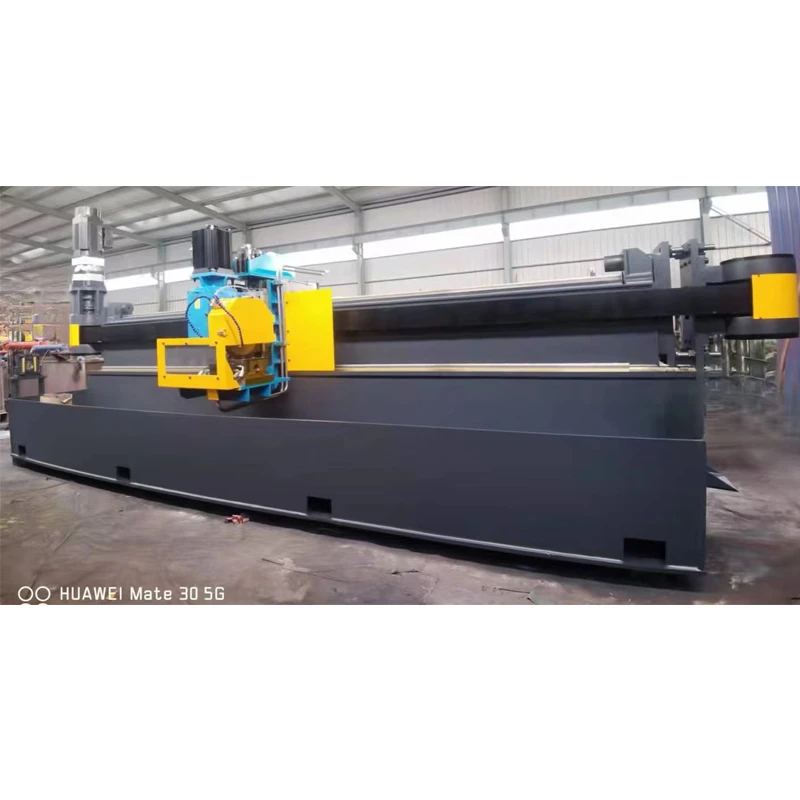tube rolling mill
Tube Rolling Mill An Overview of Technology and Processes
Tube rolling mills are essential machinery in the manufacturing sector, particularly in the production of tubes and pipes. These mills are sophisticated systems designed to produce various types of tubular products through a series of rolling processes, utilizing specific techniques to ensure precision and efficiency. In this article, we will explore the technology behind tube rolling mills, their types, processes, and applications.
Understanding Tube Rolling Mills
A tube rolling mill is dedicated to the shaping and forming of metal into tubular sections. This equipment can handle various materials, including carbon steel, stainless steel, and non-ferrous metals. The primary purpose of these mills is to create seamless or welded tubes that meet specific mechanical and dimensional standards. The process typically involves converting flat metal sheets or strips into round or square tubes through continuous deformation.
Types of Tube Rolling Mills
There are two main types of tube rolling mills seamless tube mills and welded tube mills
.1. Seamless Tube Mills These mills create tubes without any weld seam, making them ideal for high-pressure applications and industries where structural integrity is critical. The process, often referred to as rotary piercing, begins with a solid cylindrical billet that is heated and pierced to create a hollow tube. The tube is then further elongated and reduced to the desired dimensions through a series of rolling passes.
2. Welded Tube Mills In contrast to seamless mills, welded tube mills start with metal strips that are rolled and welded to form a tube. The welding process can involve high-frequency induction welding or TIG welding, depending on the material and end-use requirements. Once formed, the welded tube undergoes various finishing processes, including sizing and inspection, to ensure quality.
The Rolling Process
The tube rolling process can be summarized in several key steps
tube rolling mill

1. Heating For seamless tube production, the initial billet is heated to a plastic state, allowing it to be easily shaped and deformed. This step is crucial as it reduces the force required for deformation and ensures uniformity in the material properties.
2. Piercing (for seamless tubes) The heated billet is then pierced using a rotary piercer, creating a hollow section. The piercer's design allows for effective deformation and minimal material loss.
3. Elongation and Reduction After piercing, the hollow tube is elongated using elongation mills. This stage involves rotating rollers that constrict the tube's diameter and elongate its length.
4. Sizing and Finishing The newly formed tubes undergo a sizing process, where they are reduced to precise dimensions. Post sizing, additional operations may include polishing, cutting, and further inspections to ensure they meet specifications.
5. Quality Control Throughout the production process, quality control is paramount. Manufacturers perform various tests, including non-destructive testing, dimensional checks, and material property assessments to guarantee the products meet industry standards.
Applications of Tube Rolling Mills
The tubes produced by rolling mills find applications across numerous industries. In the construction sector, they are used for structural components, scaffolding, and handrails. The automotive industry relies on rolled tubes for exhaust systems and chassis components. Additionally, the oil and gas industry depends on these tubes for pipelines and drilling equipment due to their strength and resistance to high pressures.
Conclusion
In summary, tube rolling mills play a vital role in manufacturing the essential tubular products that support various industries. With advancements in technology and engineering, the efficiency of these mills continues to improve, allowing for greater precision and better material utilization. As industries evolve and demand for high-quality tubes increases, the importance of tube rolling mills is set to grow, cementing their position as vital components in the manufacturing landscape. Understanding their operation not only sheds light on the production processes involved but also emphasizes the critical role they play in modern industrial applications.
-
High Frequency Straight Seam Welded Pipe Production Line-BzZhou Xinghua Machinery Equipment Manufacturing Co., LTD.|line pipe steel&welded gas pipeNewsJul.30,2025
-
High Frequency Straight Seam Welded Pipe Production Line-BzZhou Xinghua Machinery Equipment Manufacturing Co., LTD.|High Precision&Automated SolutionsNewsJul.30,2025
-
High Frequency Straight Seam Welded Pipe Production Line - BzZhou Xinghua Machinery Equipment Manufacturing Co., Ltd.NewsJul.30,2025
-
High Frequency Straight Seam Welded Pipe Production Line-BzZhou Xinghua Machinery Equipment Manufacturing Co., LTD.|Precision Welding, High EfficiencyNewsJul.30,2025
-
High Frequency Straight Seam Welded Pipe Production Line|BzZhou Xinghua|Precision Welding&EfficiencyNewsJul.30,2025
-
High Frequency Straight Seam Welded Pipe Production Line - BzZhou Xinghua|Precision Engineering&EfficiencyNewsJul.30,2025


